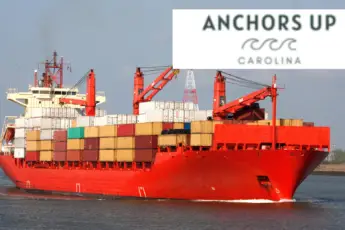When operating a boat in the southeastern states of North Carolina, South Carolina, or Georgia, it is essential to know nautical terms. Nautical terms apply to vessels operating in saltwater, freshwater, coastal, or offshore waters. Understanding the meaning of the terms is critical to the safe operation of the vessel. Safety is a priority for both you and your guests. Here are the most vital nautical terms all boaters must know.
What Is The Importance Of Knowing Nautical Terms
A boat operator must be confident in maneuvering the vessel and the terminology to quickly recognize oncoming danger or delegate a task to ensure safety.
While the list of terms is long, boaters quickly take the names and definitions, particularly when the watercraft is regularly in operation.
Boating safety is paramount, and knowing these terms will help you, the operator, maintain complete control of all aspects of running the watercraft.
Reference To The Most Common Nautical Terms
As a new boater unfamiliar with boating terms, we recommend you print out the list below as a quick reference or to study before departing the dock.
Bow
The pointed end at the most forward section of the boat is the bow. The bow of a vessel is designed to cut through the waves as it is propelled forward.
Stern
The stern of the vessel is the back of the boat. A stern most often contains the engine which powers the watercraft through the water.
Port
When facing the bow of a boat, the port side of the vessel is the left side. Understanding the left and right sides of a boat is critical to safe navigation.
While operating in darkness, the port side of the watercraft contains a red light.
Starboard
Opposite the port side while looking toward the bow is the starboard side. The starboard side is the right side and contains a green-colored light.
Foreward
The forward section of the boat is defined as the area from the center of the vessel to the bow. The operator may ask a passenger to retrieve an object or move to the forward section.
Aft
The aft section of a watercraft is the stern of the vessel. The aft of a boat is most stable.
Draft
A boat’s draft is how deep the hull and engine sit below the surface of the water. Understanding the vessel’s draft is critical to avoid running aground.
Length
The vessel’s length is the measurement from the stern of the boat to the top of the bow. Outboard engines protruding off of the stern are not factored into a vessel’s length.
Beam
A boat’s beam is the measurement at its widest point. The widest point varies depending on the design of the hull.
Windward
The windward side of a watercraft is the side on which the wind is blowing.
Leeward
The leeward side is opposite windward. A vessel’s leeward side is not exposed to strong winds as it remains sheltered.
Cleat
A cleat is a prong-like fixture securely mounted to a dock or vessel that allows for lines to be connected. The lines attached to the cleats secure the boat to the dock.
Fender
A fender is a device that creates a barrier between the hull of a boat and a dock. The fender prevents damage to the paint of a vessel as it lies against the dock and is exposed to boat wakes or waves.
Dock Lines Vs. Ropes
While a line and a rope are the same, a rope becomes a line when securing the watercraft alongside the dock because it has a function.
Boat Hook
A boat hook is an extendable pole with a hook to assist in grabbing the dock and pulling the vessel close when docking.
Flood Tide
A flood tide is when the tide is incoming as opposed to slack or outgoing.
Ebb Tide
An ebb tide is a flow of water from inshore to offshore. The tide is falling as the water is ebbing. Low tide navigation is dangerous due to the risk of running aground.
Spring Tide
A spring tide is a tide that is impacted by the phase of the moon. A spring tide occurs during new moons and full moons. The flood and ebb tide exceeds beyond normal range. The lows are lower, and the highs are higher.
Trim
A boat performs differently based on the angle at which it is propelled through the water. Trim is adjusted by mechanical tabs or the raising or lowering of a motor.
Operators fend off large waves or operators more efficiently by adjusting the level of trim.
Piling
A Piling is a lengthy circular piece of lumber driven into the floor of a freshwater or saltwater seabed. The piling frequently creates support for docks.
In addition to dock support, pilings are utilized to divide dockage space as a pivot point for large vessels to angle and enter a slip without damaging the neighboring boat.
Now Head Out On The Water With A Strong Understanding Of Terminology
Understanding terminology is a key to safety. Without understanding the most critical components of the boat and navigation, you will be bewildered. The number of terms is minimal. Therefore, you will take quickly to the essential information. Print out these terms and commit them to memory before freeing the lines from the cleats.








Leave a Comment
You must be logged in to post a comment.